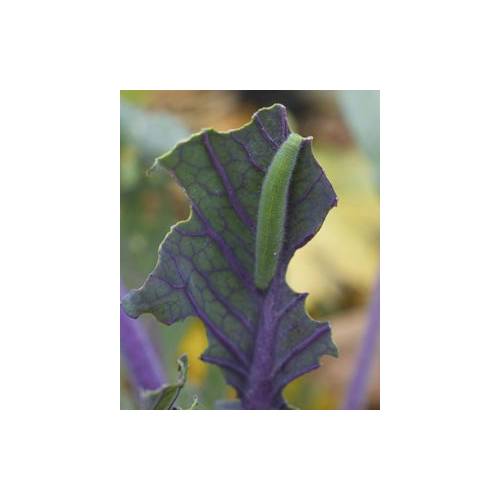
Parasites and insects
Caterpillars
- Details
-
Those pretty butterflies fluttering around the garden produce discreet larvae that rarely attack cultivated plants. However it is the moths, so quiet and discreet in their activities that are more likely to cause harm among your crops.
The symptoms
Caterpillars are not always spotted at first glance. The damage they do however is very visible. Leaves nibbled from the edges working inwards to the centre, leaving the bare veins in place. If you have a close look at the nibbled parts you will notice their droppings. The caterpillars are rarely far away, hidden along the stem or in the midst of the plant. They are characterised by the rapidity of their attack and can sometimes strip a plant of its leaves in a few days.
Life cycle
The problems caused by caterpillars are essentially a spring phenomenon when the plants start to come into leaf. Some caterpillars are active in the winter, such as the Pine Processionary caterpillar, whilst others are more active in the autumn like the Cabbage White caterpillar. This variety lives in a group of a dozen or so individuals, spread over the plant: if you find one there are bound to be others about!
How to fight them
If the damage is limited and there are only a few individuals then the easiest solution is to pick them off by hand and dispose of them. If on the other hand there are large numbers of caterpillars but localised on a particular area of the plant then you should consider using a treatment containing Bacillus thuringiensis. It is a bacterium that acts in a natural way to kill the caterpillars. A single spraying of the attacked leaves on a dry evening should suffice.
How to avoid them
Grow a wide range of plants and avoid cultivating in large numbers plants that are susceptible to attack, this way you will reduce the likelihood of the pest butterflies laying their eggs on the plant. There is currently no treatment that is totally effective against caterpillars. For certain types you can use traps that contain pheromones and prevent the adults from reproducing. This type of trap is eco-friendly and available for certain types of butterfly, such as the fruit worms (which are actually caterpillars despite their appearance!), the Pine Processionary caterpillar or the Horse-chestnut leaf miner, the caterpillar of a miniscule butterfly.
Good to know
The damage caused by caterpillars can be confused with that done by slugs, especially if the spring is very wet. It is the shiny slime trail left on the leaves that will confirm that the culprit is actually a slug and not a caterpillar - Photos (1)

